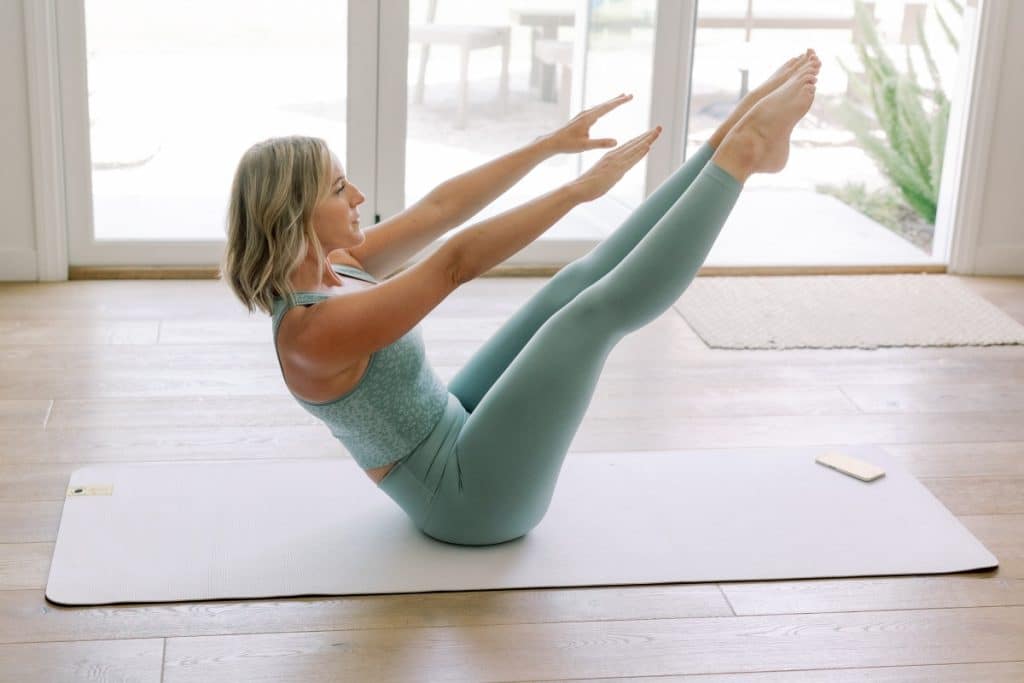
Blog
Pilates and Diastasis Recti
After having a baby do you feel like there’s a pooch in your lower belly that just won’t go away?
Is it normal to look and feel 5 months pregnant after eating a big meal?
If so, you may want to do a quick check for Diastasi Recti.
Diastasis Recti occurs in the abdomen and relates to the abdominal muscles. During pregnancy, the rectus abdominis muscles can end up separating due to internal pressure and the growth of the fetus. The rectus abdominis muscles run parallel to each other and lengthwise along your abdomen. When affected by Diastasis recti, they are forced to separate away from the midline to allow space for the growing baby. The diagram below shows a normal Rectus Abdominis, compared to a separated Rectus Abdominis (Diastasis Recti):
The Linea Alba (connective tissue) also separates and thins which reduces the support of your organs and overall trunk stability.
(image courtesy of the Tupler Technique)
The majority of cases can be corrected or greatly improved through a specific and conscientious exercise routine. Pilates is an ideal program for women experiencing Diastasis Recti due to the precise training and focus on transverses abdominis strength.’
{quick cheat sheet}
Rectus Abdominis (RA): the “6 pack muscles” that run along the top of your belly.
Transverse Abdominus (TA): deep core stabilizing muscles that act as a corset around your waist and spine.
Diastasis Recti (DR): the vertical separation of the rectus abdominus/connective tissue.
“During the course of pregnancy, the abdominal muscles will stretch by over 50 percent of their original length” (pilates-pro.com)
Thanks to the extra hormones on our body during pregnancy our body is able to expand and stretch in an incredible way. But the issue arises when our muscles don’t return to their normal state.
Common exercises that work the rectus abdominis (aka: your “6 pack muscles”) such as crunches, actually hinder recovery and make the condition worse. So it’s very important to first, determine whether your not you have Diastasis Recti, and second, follow a safe, conscientious exercise plan as you attempt to correct the issue.
At-Home Test For Diastasis Recti:
1. Lie on your back with your knees bent.
2. Place two fingers just below your navel. Apply gentle pressure while slowly engaging your abdominals and raise the head, neck and shoulders to a chest lift position. Move your fingers to check at your belly button, and 3 inches above your belly button as well.
3. If you are able to feel a space that is MORE than two fingers’ width apart, you may have DR.
You’ll also want to notice the depth. You may be able to see a visible ridge running down the center of your abdomen, some ridges are deeper than others.
If you notice a gap wider than 2 fingers it would be a good idea to schedule an appointment with your doctor, a physical therapist and/or a trusted Pilates instructor to get a clear picture of how severe the separation is and what steps you can take to correct it.
Interesting facts About Diastasis Recti
- It is very, very common and many women have it without realizing it.
- It is possible to heal and recover but it may take time (1 year or more).
- Healing DR is a matter of healing the connective tissue which will help to bring your abdominals back together again. It is not just about gaining more strength.
- Surgery is an option but is generally recommended as a last resort for very severe cases.
- Focusing on the transverse abdominis (as done in Pilates) is a major component of healing and re-gaining strength.
- Even if you had a baby 8 years ago it is still possible to improve your condition.
- Practicing smart, core-stabilizing exercises that engage the transverse abdominus and pelvic floor, along with strategic stretching can help prevent DR in future pregnancies.
Exercises To Heal Diastasis Recti:
Pilates and Diastasis Recti can go very well together. However, it is important to work with a qualified instructor and to gain a clear understanding of which exercises help and which exercises hinder the healing process.
The pelvic floor and TA should be a strong area of focus. Along with the upper back, gluteals, and surrounding muscles to restore postural balance.
One should return cautiously to exercise and work with a trained professional. I recommend a physical therapist/Pilates instructor with DR experience. I have also heard great things about the Mutu System.
Exercise Precautions For Diastasis Recti:
Due to the abdominal focus in Pilates, there are a few important concerns and precautions to consider.
Any action or exercise that causes the stomach to bulge or protrude forward should not be practiced. It does not help heal diastasis recti, in fact, it often makes it worse. This should be your number one consideration when re-training your abdominal region. You should never feel pain or or additional separation while performing exercises.
Movements to avoid:
- forward flexion of the upper torso (i.e.: sit-ups/crunches)
- upper body rotation with reaching
- extreme back extension/arching
- upper body flexion with rotation (i.e.: bicycle crunches)
- sports with rigorous sudden rotation of the trunk such as tennis, baseball, lacrosse, etc.
While exercising, it can be helpful to place your hand over your abdominals to ensure that you are not bulging forward or putting excess pressure on the linea alba (middle line).
After pregnancy it can be challenging to FEEL the abdominals in the same way you did prior to pregnancy so it’s important to spend time on the basics as you re-gain the mind to muscle connection.
Movements should be focused on the proper engagement of the transverse abdominus (deep core muscle) and pelvic floor. Due to the hormone, relaxin, which is present in postpartum and breastfeeding women, it’s important to keep movements smaller than your maximum range of motion. (Relaxin increases flexibility and loosens joints.)
If something causes pain, discomfort, dizziness, nausea or breathlessness, it is imperative that you discontinue the exercise.
Women with DR are ideal candidates for a Pilates program, yet require a very focused conditioning program and very cautious progression. Pilates can be a great path to take because of the focus on the mind-body connection which is important in re-gaining strength, but also important to help women connect with their bodies again and in a whole new way.
The recipe for healing includes:
- Deep, focused core work to with a trained professional to strengthen the transverse abdominus and pelvic floor.
- Time (some women take 6 weeks, others take over a year to heal).
- Splint/Belly Band. I have not used this myself but many people suggest that wearing a splint can help bring the connective tissue back together by increasing blood flow and restoring proper position. The Tupler Technique provides more information on this point.
I’ve filmed a short video with very basic exercises that are safe for Diastasis Recti, along with a tutorial on how to perform the self-test. Again, I would recommend that you consult with your doctor and meet with a trained professional in-person to find the best protocol for you and your individual needs.
How to prevent Diastasis Recti:
While it may not be possible to prevent DR 100%, it is possible to increase your odds of avoiding it or healing more quickly should it appear. Maintaining a safe, core-focused exercise routine during pregnancy can help to maintain healthy muscles and healthy connective tissue. I practiced Pilates throughout my entire pregnancy and after delivering I noticed a slight separation for the first few months. By slowly returning to my routine and practicing safe exercises, I was able to close the gap and continue on with my regular routine.
Of course, every body and every situation is unique, but ultimately, keeping yourself in good shape during pregnancy will put you in a better place to heal and recover postpartum.
You can find safe and effective prenatal and postpartum Pilates workouts within the Lindywell membership. Click here to start your 14-day free trial today.
I hope this post is informative as you navigate the prenatal and postpartum world. If you found it helpful I’d love for you to share it with a friend in need or post it to Pinterest so that this information spreads. It’s important for women to know. 🙂
If you have any questions or have had success of your own in healing DR please feel free to post a comment!
xo,
Please keep in mind that I am not a doctor. This post is for informational purposes and I encourage you to do your own research and take your doctor’s advice before my own.
share this post
Helping You Break Free!
Get your weekly delivery of inspiration—Pilates, nourishment,
& mindfulness—changing your relationship with food and your body.


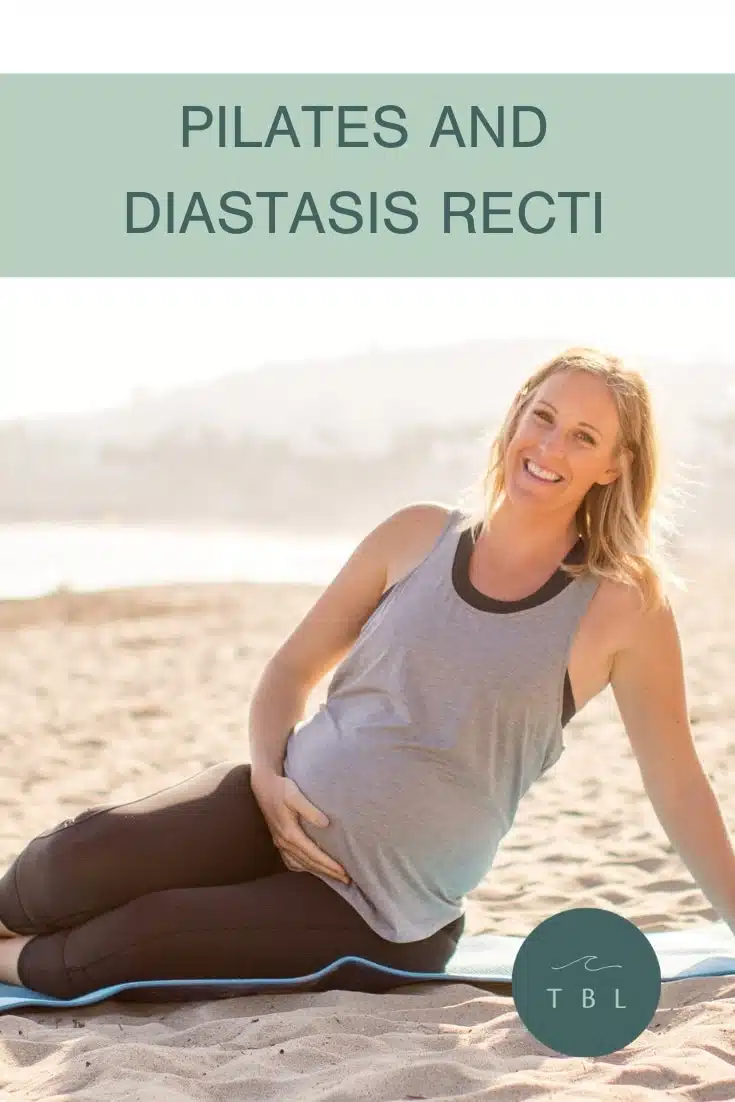
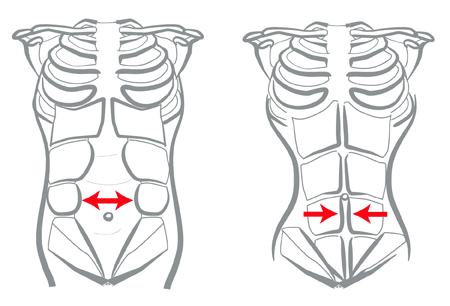
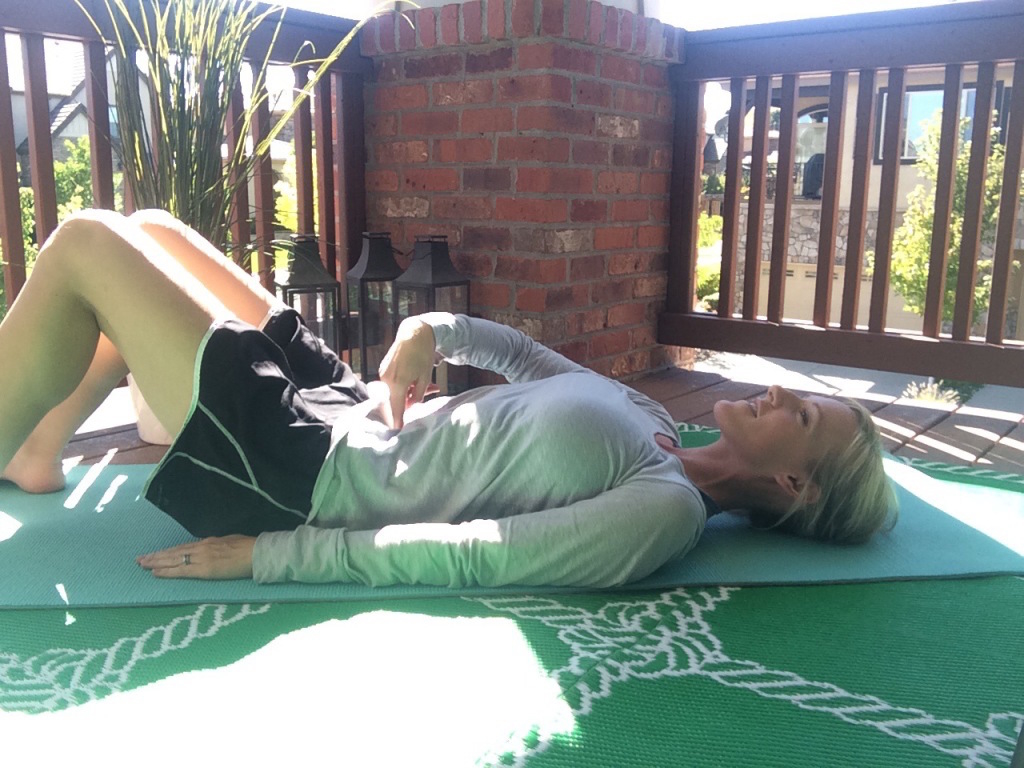
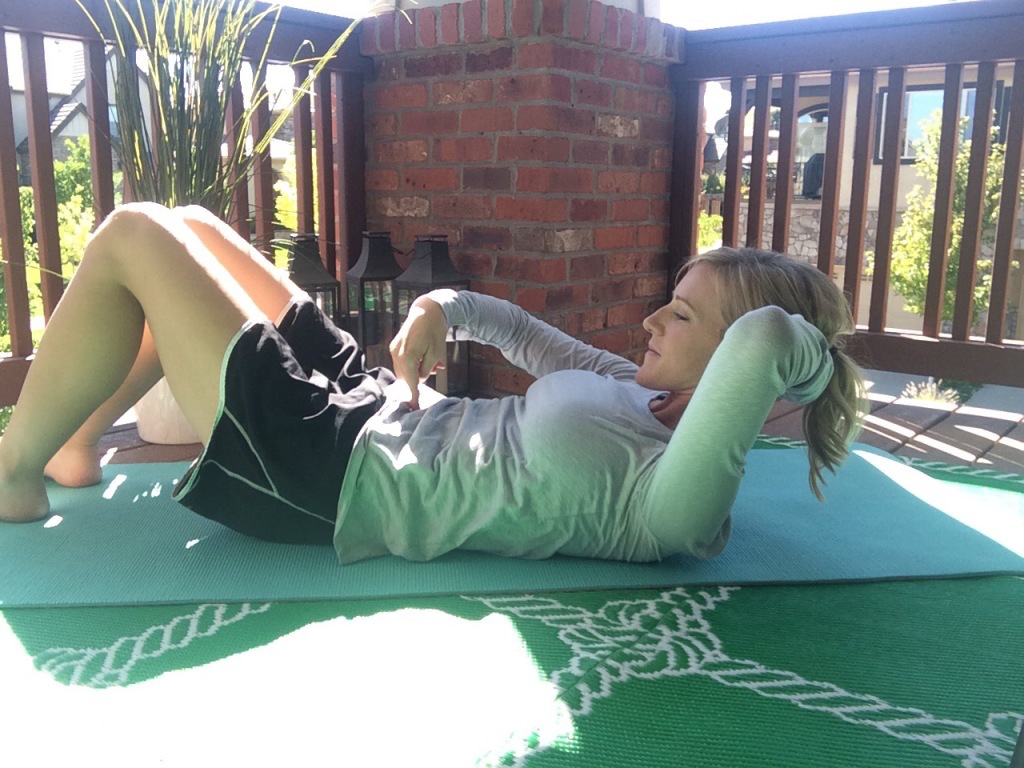
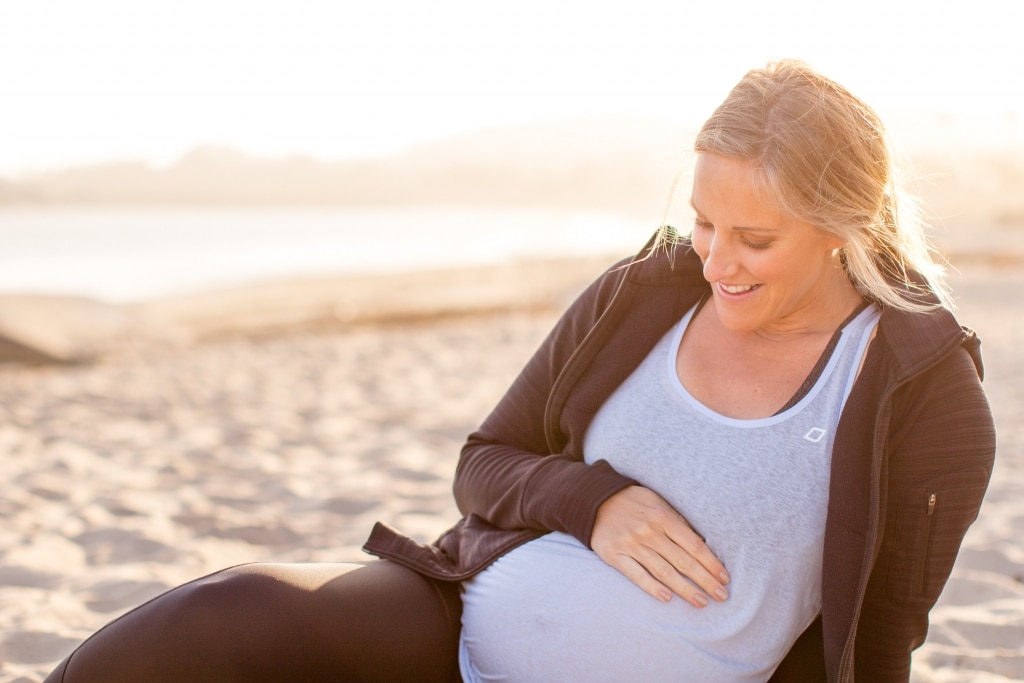
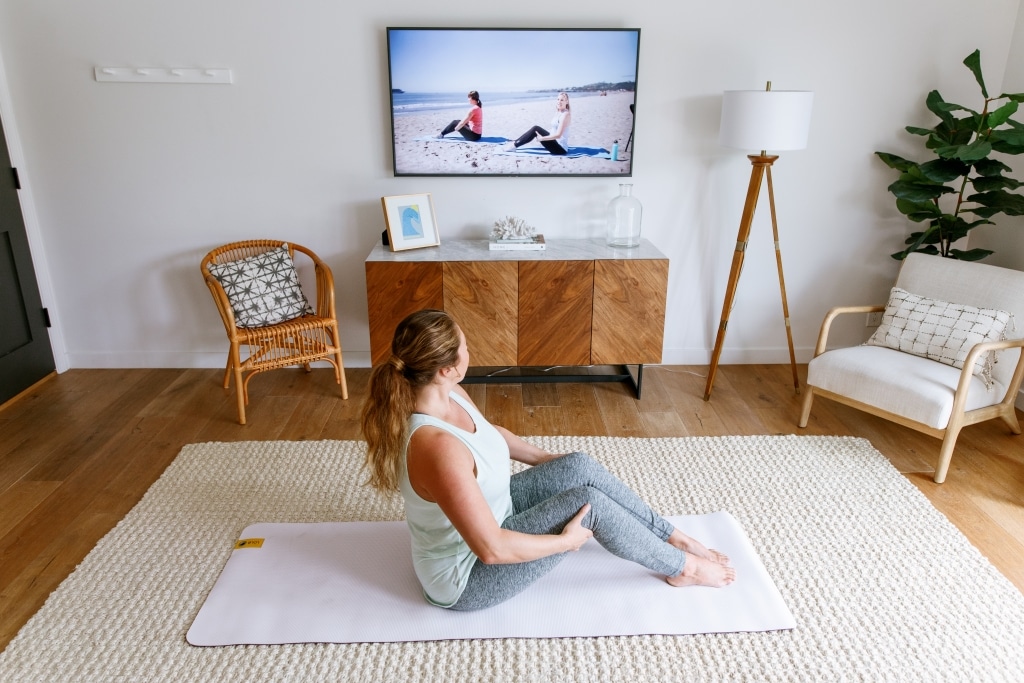




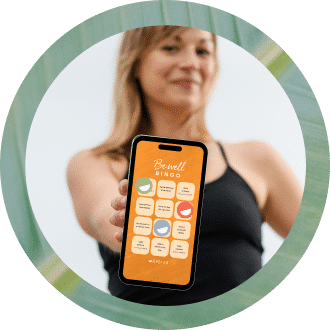
56 thoughts on “Pilates and Diastasis Recti”
Great post really good information. Thanks . FYI the at home DR check photos are upside down.
Hi Jodie!
Thanks for letting me know. To me they look right side up, how strange! Are they still upside down from your view?
Thank you!
xo
Hi Robin! I have a quick question! All my life, I have always enjoyed achieving my “six pack” belly, but after having my second child, I made the mistake of hitting the gym too early on, and I didn’t realize the damage I was doing to my stomach. I didn’t realize or even heard of DR, and I came across something on the Internet that made me realize this is what I had. It was confirmed with my doctor. I am wearing a binder now and modified my exercise routine. I believe it is getting better. Mine was maybe 3 fingers apart…
My question is: Once the DR is healed, will I ever be able to return to doing stomach crunches, or anything that really works that area, or will this be an area, that I need to forever be careful with from now?
Thank you so much for all your helpful information!
Hi Eileen! Once you are healed you are able to resume normal exercise! 🙂 The key is to really work on how to use your core properly though. So Pilates is a great way to make sure you’re staying connected to your deep core muscles and pelvic floor so that you can continue safely and with results.
Yes they still are.
Hi Robin. Great post. I wish I had looked into this more diligently when I had my son several years ago. Do the same things apply if you had DR and a c-section? If it’s been more than 10 years, do these exercises still help?
Thanks.
Absolutely!
The Dr Photos are correct (right side up) on my computer. Just FYI!
So strange! not sure what is going on…:)
You are such a wonderful source of help to so many women. I know I for one am so grateful for this post even though it’s been 3 1/2 years since I’ve given birth! :/ Good info, can’t thank you enough!
Glad you found it helpful Meggan! xo
Such an informative post, Robin! Thanks for sharing your knowledge 🙂
Is it possible to have DR without having been pregnant?
Hi Marie! Yes, I believe so! Men can get it too.
Hmm… I wonder if I actually have it myself… I’ll talk with my pilates pt on Friday! 🙂
Love this post! Please post more pilates friendly diastatis recti videos!
Well done. This is a great article, Robin. I thoroughly enjoyed it and have shared it through my FB page. FYI, there are a few links not quite working (The prenatal video link on this article, and the In Person link on your Let’s Train drop down). Thanks again!
Thanks Amber! I’ll look into those issues. I appreciate you letting me know. 🙂
So helpful, thank you for this! I’ve had to omit doing a lot of pilates exercises for the last few months because I had a mild case of diastasis recti and was looking for DR specific exercises!
What an informative post! Thanks Robin! I happily discovered your Pilates videos through Athleta this summer. I have been doing them regularly amd really enjoying the workouts. But after reading this and watching the video, I am wondering if I should be scaling back/modifying. My separation sounds similar to yours, 1 finger, not very deep, and less than a finger above the belly button.
Hi Amy,
That’s about what I have too. The general rule is that you should be modifying and taking precautions if your separation is more than 2 fingers. But either way it’s always good to work on connecting to the deep core muscles which Pilates will do for you if you work with intention and precision. 🙂
Another excellent resource to check out is Mutu System. I’ve been doing it since I had my third child, and have greatly reduced my DR. They do not recommend splinting as this causes more internal pressure and can result in more pelvic floor issues. Mutu is a great addition to Pikates if you’ve just had a baby.
Thank you so much for this!! I was wondering what the deal was, but I am pretty sure I have Diastasis Recti. You have great info here and I love the exercises you provided. Here is hoping that it works. 🙂
Very helpful. Will be using some of those exercises in my workout today. Can you recommend any (mild) DR exercises for use with an exercise ball? What about dead bug or ball pass? Are they bad news? What about planks? Thanks for your thoughts in advance!!
Hi Nathalie, I don’t consider myself a DR expert so I always recommend people seek out a highly trained physical therapist or the Tupler Technique or MuTu System. Planks are generally not recommended for DR because most people put excess pressure on the abdominal wall while doing them. Generally speaking exercises for DR may FEEL very easy – but they are doing the good work you need to do – so don’t get caught up in thinking you need to work your abs super hard to get results. 🙂
Here’s my DR post in case you missed it: http://thebalancedlifeonline.com/pilates/pilates-diastasis-recti/
Hi can you just confirm that your prenatal series is suitable if you are not pregnant and have DR? I am three years post natal and definitely still have DR! It just gives me more videos to work from. Thanks (:
Hi Madeleine! The prenatal series is not 100% DR friendly. For example, planks are included and planks are not recommended when trying to heal DR. Check out my post just in case you haven’t seen it yet and I do recommend following a plan specifically designed to heal DR (such as Tupler Technique or the MuTu System). It’s best to have a good understanding of what’s helpful and what’s harmful and then you can modify other workouts to suit your needs. 🙂
Robin,
Thank you so much for writing about diastasis recti. My son is 15 months old and I have a pretty bad separation. I just began Pilates last night. I see that I need to discuss my healing plan with my instructor.
Thanks for all you do!
Amber Albert
Hi Amber! I’m so glad you found this helpful. Hopefully your instructor will have some good guidance for you as well. xoxo
Pingback: Postpartum Exercise: returning to Pilates after pregnancy
Good morning Robin! I recently found your site and I am just loving all the great information! I love that you provide such great information for all women! I had my 5 months ago via c-section and am realizing I have a pretty large/deep separation. I will defiantly make a visit with my doctor but I do have a question for you! How will you know you are ready for more challenging exercises? Will the gap become noticeably smaller? Since these types of exercises don’t make you feel like you are working too hard I was just wondering how you know!
Hi Ashlee! I’m so glad you found this helpful. Congrats on your new little baby. 🙂 If you find yourself with a deep separation I really recommend seeking out a professional that is an expert when it comes to DR. Perhaps finding a physical therapist who works on this specific condition or looking into the Tupler Technique or the Mutu System. I don’t feel that I am an expert beyond knowing how to determine if you have it and how to safely do Pilates while healing the separation. For anything more I would refer you to someone who is more qualified to answer such questions. Sorry I can’t be of more help in that specific way! xo
Hi Ashley what kind of extension can you do. I have a client that has had a 3 finger separation Diastasis Recti for 10+ years the result of twins and she has a mild hernia. she feels it has gotten smaller from 4 fingers. she is very strong and fit and has been doing Pilates for a year+
Hi! Thank you for this article on DR & Pilates. I was happy to hear that Pilates IS good for healing DR. My question though….is doing “the teaser” Pilates move safe as well?
Hi Robin! Thank you for this article on DR & Pilates. I was happy to hear that Pilates IS good for healing DR. My question though….is doing “the teaser” Pilates move safe as well?
Hi Michele!
Pilates is safe for DR when modified. The teaser would not be recommended for women with DR because of the forward “crunching” motion that takes place. 🙂
Hi Robin! Thanks for a great article. My question is…If you have just one finger is it safe to do roll up, teaser and the classical mat exercises or you would keep modifying or avoiding them until the separation is totally gone?
While every situation is unique, generally speaking, 2 and under is normal and fine to continue with regular exercise. But I do encourage you to be mindful of your form and really focus on building deep core strength through something like Pilates. 🙂
Hi, Robin! Do you have a 30 minute video that is diastasis recti friendly? Thanks for all that you do!!
Hi LeAnn!
I don’t at this time. But I will certainly consider one in the future! 🙂
Robin
Thanks for this post! I’m 24 weeks along and I’ve been doing a mixture of pilates, strength training, and water aerobics so far in my pregnancy… Does this at-home test work during pregnancy or is the separation inevitable? I believe I’ve been doing good things for my abdominals and your prenatal series is awesome for that, but I’m nervous!
Hi Sarah! As I understand it, I don’t think it’s really possible to diagnose until after pregnancy. During pregnancy there is bound to be a a bit of separation. It’s not until post-pregnancy that you will be able to tell the degree of separation and if it heals properly or not. I’m glad you’re being active – that’s the best thing! 🙂
Hi Robin,
Age 63 yrs, worked construction for many years and still i great shape (generally) while laying in bed my wife noticed a large bulge about an inch high, an inch wide and about 5 inches long in the center of my chest when laying flat on my back and lifting my head. Weird. A visit to my primary doctor said a prior hernia had torn and it required surgery to repair. Two weeks later a trip to the surgeon he diagnosed this DR condition. I have never had pain with this and the surgeon described this as the outer muscles age differently from the center muscles. Does this all make sense?
Interesting! I have never dealt with DR in the chest area so I can’t be sure – I always recommend getting a second opinion just to see if they agree with your surgeon. Hope it’s no big deal and that all is well! 🙂
So so incredibly helpful!! Thank you so much!
hi if someone has a DR do these exercises apply in the longer term for example 3 – 4 years after birth not just immediately postnatal? I am just a bit confused about how long the DR lasts and how long a cautious approach should be taken ie no crunches. Is plank a good exercise for DR or too much load on the DR?
Hi Robin, great video! What exercises do you recommend for DR on the reformer? Thanks!
Hi Carla! Robin plans to add some new reformer workouts this year – please stay tuned for the workouts and modifications! 🙂
Hello,
Thank you for this informative post! I don’t know if you’re still responding to comments, but I just started a pilates program (using the machines-not mat). I had mentioned my concern about diastasis and had the instructor look at me first. My separation is now only about 1.5 fingers (almost 2 right at my belly button). I had my last child 2 years ago, and stopped breast feeding about 2 months ago. The instructor said she felt my separation was so small that I could do all the normal exercises. I’m still concerned though. Is it possible to re-injure that muscle through regular pilates exercises? Should I be doing anything to prevent that? Thank you!
I still have a small separation as well. I do regular Pilates but really make sure that I’m engaging my core properly and not over-doing it. I often move slower or stop and start over to make sure I’m using good form so that I don’t make my separation worse. I think that would be a good strategy for you too. 🙂
Hello – I’m a 61-year-old woman. In the past couple of years, I’ve had increasing lower back pain. It feels like my muscles are burning even when I’m doing nothing but walking the dog. I had two children, both by C-section, when I was in my twenties. Will Pilates work for me at my age? Or is it too late? The pain is of such intensity it interferes with daily activities to the point I can only engage in something for a few minutes, then I must sit or lay down to relieve my back pain.
Hi Becca! You are definitely a candidate for Pilates. Because it is a low-impact exercise, people of all ages are able to exercise via Pilates. And, many find that Pilates is the answer to taking care of stubborn back pain. That being said, we always recommend you check with your doctor or physical therapist before you begin a new exercise. 🙂 Best wishes to you as you continue on your wellness journey!
Another instructor did the hundred with head on the floor or propped on a towel, knees bent with feet flat and arms long out your side. Is that not a good way to do it with DR clients.?
Hi Teresa! We didn’t practice the hundred in this workout. But the way you described it is the best way to practice the hundred with DR. That way, you aren’t putting too much forward flexion on the upper abdominals. 🙂
My mother suggested I go the old fashioned route from day 1 after birth, and use strong control panties which puts everything back into the correct position to heal. I had a C section but started with small pelvic tilts supine, standing against a wall and the cat. I had twins full term by weight and no DR. The support from the panties made me feel much stronger and stand up straight right from the start – I felt amazing, pushing along two babies! I am still exercising 43 years later so I never used the panties instead of exercising, just to support it and make sure that I was strengthening internally with everything in place. After all, there are cultures who bind the mothers – but I imagine it would be quite difficult to exercise all bound up.
Are the prenatal approved workouts in the library of the sisterhood ok to do with diastasis recti?
Hi Cherish! Most of the prenatal friendly workouts in the Workout Library will be better and suitable for DR than your average Pilates workout – but they were not designed specifically for that purpose. So please check with your medical provider to make sure you are cleared to do Pilates and to know which modifications you will need to make for your body. 🙂